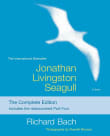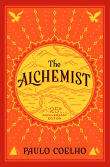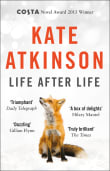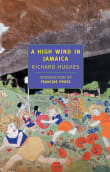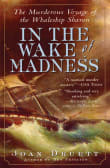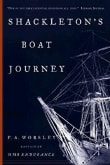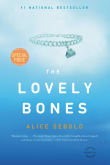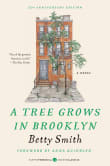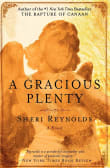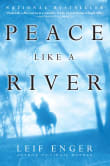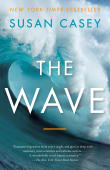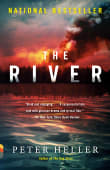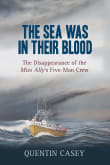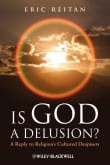Life of Pi
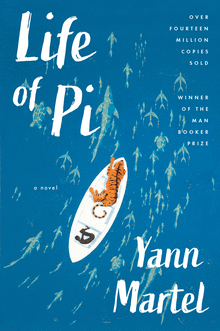
Book description
After the sinking of a cargo ship, a solitary lifeboat remains bobbing on the wild blue Pacific. The only survivors from the wreck are a sixteen-year-old boy named Pi, a hyena, a wounded zebra, an orangutan—and a 450-pound Royal Bengal tiger.
Soon the tiger has dispatched all but Pi Patel,…
Why read it?
25 authors picked Life of Pi as one of their favorite books. Why do they recommend it?

I loved this book for its fantastical portrayal of a Pacific voyage that mirrors the internal conflicts many of us face. Like Pi, who embraced multiple faiths during his ordeal, I searched for answers to reconcile my faith and sexuality across various denominations, religions, and philosophies.
Pi’s story as he journeys across the Pacific, a tiger in tow, allowed me to reflect on the moments when I felt alone, wrestling with my faith in the face of an overwhelming challenge, given my fundamentalist upbringing.
From S.'s list on exploring crises of faith.

A few books leave me with a mental image that just never dissipates. Life of Pi was one of these. A boy in a boat with a Bengal tiger that eats the other rescued animals but leaves the boy alone? How can I ever forget that imagery? What an incredibly inventive allegorical story.
There’s another scene—I won’t reveal it here for those who’ve never read the book—that still gives me chills and leaves me in awe. Of course, it’s a nighttime scene when all the scary phantoms appear. It left me wondering if I would ever look at a tree…
From LB's list on someone who is coming of age to see the world.

I love this book because it is one of the most stunning leaps of imagination I have ever read. The story is fresh, original, enchanting, and engrossing, crossing both literal seas and a large sea of imagination with surprises at every turn.
Pi, the young Indian boy at the center of the story, is beautifully drawn as he confronts his survival on a raft that he shares under the most unusual of circumstances. The issues—courage, resilience, humility, spirituality—resonate with all of us contemplating the human condition.
From Ken's list on coming of age survival and adventure.
If you love Life of Pi...

Adapted into an Academy award-winning film in 2012, Martel’s original novel follows an Indian boy named Piscine “Pi” Patel who is fascinated by religion, learning and adopting different teachings in his quest to understand God.
After a shipwreck, he is forced to survive for months while stranded on a lifeboat in the Pacific Ocean with only a Bengal tiger for company. Pi’s reflections at sea, and the fantastical nature of his voyage, raise questions about the purpose and function of religion: such as, why people seek faith in a higher power, how it shapes our perception of reality and morality,…
From Duncan's list on The best philosophical fantasy novels.

Having seen this book referred to as one of the best novels of the past few years, I decided to pick up a copy, and I could hardly put it down after page one!
This beautiful story tells of a shipwrecked boy in the Indian Ocean who has to share a life raft with a Bengal tiger. It delves into spirituality and the practicalities of life on the ocean and is described as a fantasy adventure novel.
At times, I laughed out loud; other times, there were a few tears in my eyes as the incredible story unfolded with some…

I love this book because of its reference to a higher reality and to the idea that life itself and all its details can be read as symbolic metaphors for reality.
After the boat carrying Pi’s family and their zoo animals from India to Canada sinks. Pi floats adrift for 277 days before he’s rescued from his lifeboat, where he experiences extreme distress and fear for his life.
When he presents two different versions of his experience to his rescuers, who must write an official report, his rescuers must assess which of his versions contains the “truth” in the same…

Again, I chose a book that is given in the first-person point of view. Rather than using a variety of first persons to tell a story, Martel takes the main character, Pi, and uses him in back-and-forth narrations from various ages – young and in the moment, and older, looking back. As well, he uses Pi as a general narrator overall in the storytelling. This gives the illusion that perhaps the other characters are not so important, or rather they are not the point of the story.
From Robert's list on first person that tell it like it is.

Even after seeing the extraordinary film based on the novel, I found this book to be a fantastic story, with a simple and soulful philosophy of life, and is enriching even if you’ve already seen the film. It’s a survival tale about a sixteen-year-old boy on a lifeboat with a tiger and it is true to life in the beginning, then veers off into the surreal. As a writer, I was in awe of his details and specificity. His lengthy description of hyenas, for example, hyenas being an animal I’ve never had much interest in, was absolutely fascinating, though who…
From Diane's list on running away.

This book is about the power of story. The protagonist believed three different religions at once because he saw power in all their stories. All of us are free to choose the stories we live by, in mind, body, and spirit.
The story features animals and makes some incredible animal/human interactions believable. It promoted respect for animals, while making me question if it should make any ethical difference anyway, whether the animals adrift on the ocean with Pi were really humans or not. Humans are animals too, aren’t we? Life deserves the same respect whatever species we happen to be.…
From Tui's list on animal stories for love of our planet.

In the bestselling novel Life of Pi, a boy survives 227 days at sea in a lifeboat with a Bengal tiger named Richard Parker. Or does he? That’s why I am always intrigued by this multi-layered story that explores the relativity of belief. The author is asking me, the reader, to decide what’s real and what isn’t. Do I accept the more unbelievable yet uplifting tale of surviving in a lifeboat with a tiger and other zoo animals, or should I conform to the world as I know it and default to a more mundane version without the animals?…
From Jeff's list on questioning the nature of reality.
Want books like Life of Pi?
Our community of 12,000+ authors has personally recommended 100 books like Life of Pi.


